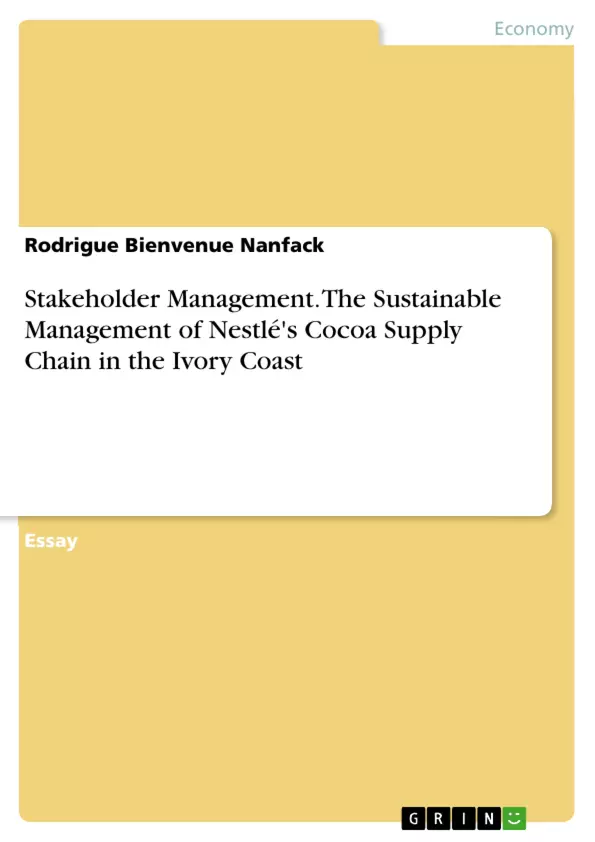Stakeholder Management with long-term sustainability is decisive in determining whether a business organization is being successful or not. Stakeholder Management has a direct impact on the company’s competitiveness and its environment. The most profitable companies have strong relationships with their relevant stakeholders groups, that is, the stakeholders in their business field. Stakeholder Management has a wide actively and effectively challenge to manage these important relationships with their different stakeholders groups. Strong customer relationships, successful relationships with suppliers, committed employees and good relationships with other stakeholders groups define the winners of today in the world ́s global economy and that is why companies like Nestlé understand, that they should keep an important and a great relationship with their stakeholders. To be able to achieve a sustainable stakeholder management, organizations first have to define who their key stakeholders are, they have to be able to understand their needs, then secondly, they should define what kind of stakeholder management system applies thereto.
Inhaltsverzeichnis (Table of Contents)
- Introduction
- The Stakeholder theory of corporation
- The legal argument of R. Edward Freeman
- The general issue in business ethics
- The economic argument
- The stakeholder concept
- The importance of stakeholder management
- The implementation process of the stakeholders management system
- Nestlé's stakeholder engagement
- Nestlé's controversy
- Nestlé's stakeholder management in the Ivory Coast
- Nestlé's Stakeholder Mapping in Ivory Cost
- Supply Chain Mapping and Actors
- Risk Management and Assessment
- Conclusion
Zielsetzung und Themenschwerpunkte (Objectives and Key Themes)
This paper aims to analyze Nestlé's stakeholder management approach and its impact on the company's reputation and business operations. The focus is on exploring whether Nestlé has improved its stakeholder engagement after facing various scandals in the past. The analysis particularly examines Nestlé's stakeholder management practices in the Ivory Coast, utilizing a case study approach.- The importance of stakeholder management for corporate success
- The concept of stakeholder theory and its application in practice
- Nestlé's stakeholder engagement strategies and controversies
- The impact of stakeholder management on Nestlé's operations in the Ivory Coast
- The role of sustainability and corporate social responsibility in stakeholder management
Zusammenfassung der Kapitel (Chapter Summaries)
- Introduction: This chapter sets the stage by defining stakeholder management and its significance for corporate success. It discusses the concept of stakeholders and their importance in shaping a company's reputation and overall performance. The introduction also highlights Nestlé's controversial history and its need to address stakeholder concerns for long-term sustainability.
- The Stakeholder Theory of Corporation: This chapter delves into the theoretical foundation of stakeholder management, exploring the legal, ethical, and economic arguments behind the stakeholder theory. It examines the descriptive, instrumental, and normative aspects of the theory, emphasizing its role in understanding the corporation's relationships with various stakeholder groups. The chapter also presents a visual representation of stakeholder interaction within a company.
Schlüsselwörter (Keywords)
The key terms and concepts explored in this paper include stakeholder management, corporate social responsibility (CSR), stakeholder theory, stakeholder engagement, supply chain management, sustainability, and Nestlé's controversial history. These keywords are central to understanding the complex dynamics of corporations and their relationships with various stakeholder groups, particularly in the context of Nestlé's operations in the Ivory Coast.- Quote paper
- Rodrigue Bienvenue Nanfack (Author), 2014, Stakeholder Management. The Sustainable Management of Nestlé's Cocoa Supply Chain in the Ivory Coast, Munich, GRIN Verlag, https://www.grin.com/document/283852



